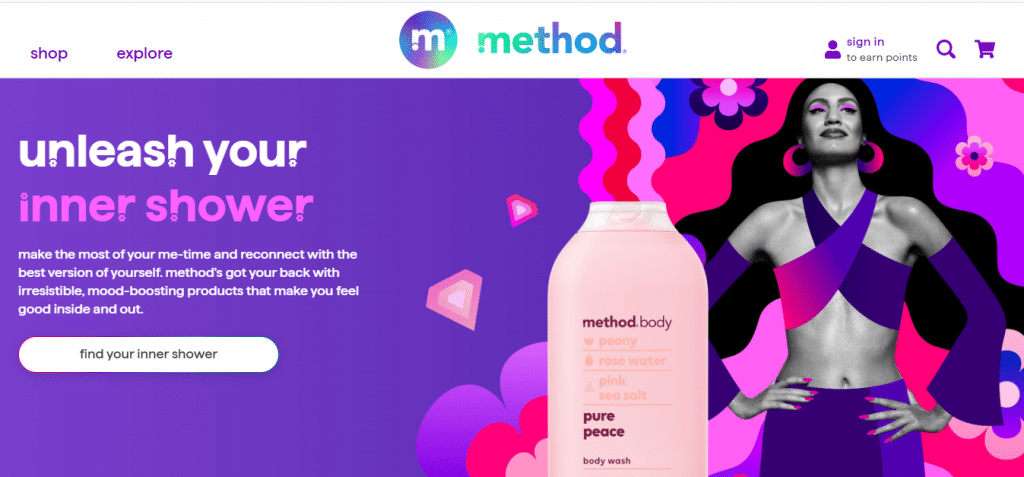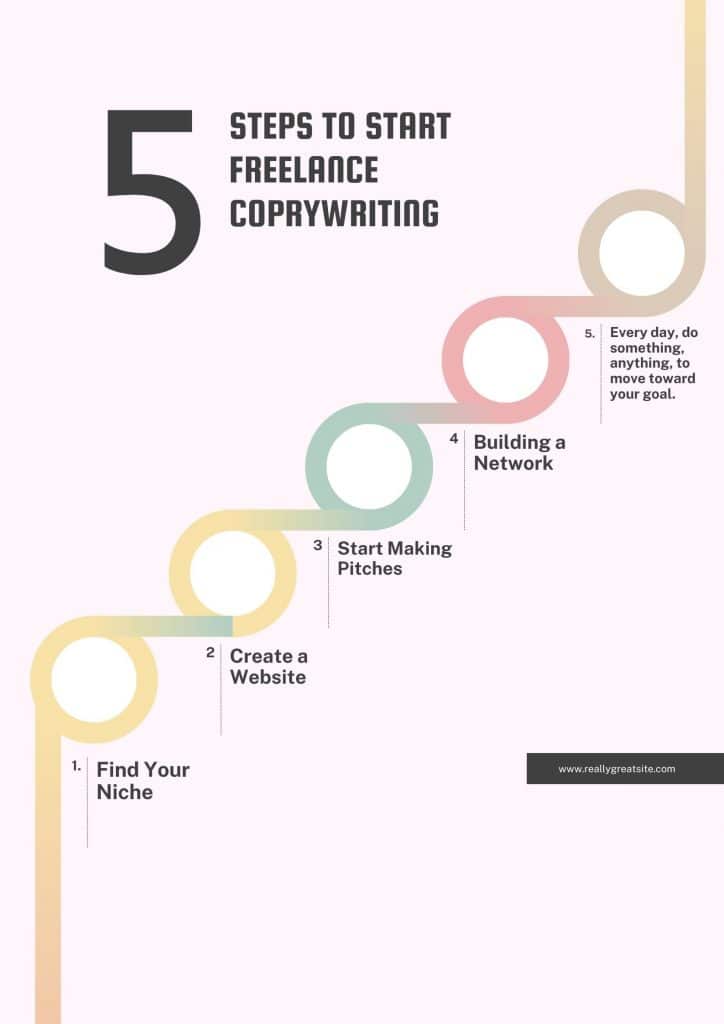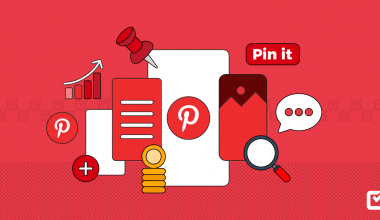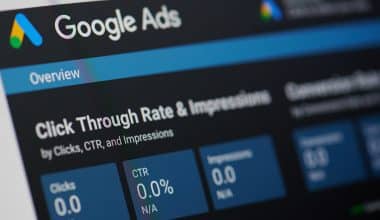Have you ever come across an online ad that caught your attention? How about a website headline that immediately captures your attention? I must admit that captivating copywriting content is truly beautiful.
Throughout my experience as a copywriter, I’ve had the honor of crafting engaging content that captures interest and drives real outcomes. Let me share a memorable experience with you. During a product launch campaign, my approach to writing resulted in a significant 30% boost in click-through rates in just one week. Experiencing the tangible effects of expertly written content on user interaction was incredibly fulfilling.
In today’s world, mere word combinations fall short of capturing attention, given the constant flow of information. This means you need to create engaging content that resonates with your audience and produces positive outcomes. While working at Ceerays Enterprise, I encountered again, the task of updating the website content to match a rebranding effort. I pulled through by infusing a storytelling technique and customizing the communication to connect with the specific audience. At last, we not only garnered positive feedback but also experienced a notable increase in conversion rates by 20%.
That, my dear, is when your freelance copywriting skills truly stand out. It can turn ordinary text into captivating narratives, compelling sales pitches, and unforgettable communication. Enough of my stories already. Let’s now get ready! Join me for a detailed analysis of the strategies and techniques employed to craft compelling content that connects with your audience, as I have successfully demonstrated over the past few years. Having said all that, by the end of this, with my skills and expertise, you’ll possess the knowledge and the example to transform your copywriting from ordinary to captivating for a good salary. Shall we begin?
Key Takeaways
- Compelling copywriting is an art form: It requires practice, dedication, and a passion for language to truly master.
- Headlines are your first impression: Craft clear, concise, and captivating headlines using strong verbs and highlighting the benefits for your audience.
- Understand your audience: Research their needs, desires, and pain points to tailor your message for a deeper connection.
- Storytelling is powerful: Weave narratives that evoke emotions and create a memorable experience for your readers.
- Visuals are essential: Use high-quality images, infographics, and videos to complement your content and enhance understanding.
- SEO matters: Optimize your content with relevant keywords to improve search engine ranking and reach a wider audience.
- Calls to action are crucial: Tell your readers what you want them to do next, whether it’s visiting your website, subscribing, or making a purchase.
Read Also– 6 Reasons Why Copywriting Services Are Crucial for Every Company
What is Copywriting?
Copywriting simply involves the craft of composing content that persuades, guides, or motivates a specific audience to take a desired action. This action can be making a purchase, subscribing to a service, following a link, or engaging with a company in various ways. This means that creating compelling content is a crucial aspect of successful marketing and advertising campaigns.
Crafting messages involves selecting words that stir emotions, establish relationships, and ultimately prompt specific actions. In essence, a proficient writer understands their audience thoroughly and customizes their messages accordingly. They employ a range of techniques to craft engaging and impactful content that resonates with readers or viewers, just like I am doing now.
The Foundation of Compelling Content
Think of yourself at a gathering where you engage solely with individuals who share your interests. This, in turn, is the way successful copywriting operates!
This means, that before crafting engaging content, it’s crucial to understand your audience, their motivations, and the type of content that resonates with them. You see your audience as guests at a party, and your goal is to tailor the conversation (your content) to suit their preferences.
But, the real question is, ‘How can you gain a deeper understanding of your audience?’ Research is key! Discover more about their interests, challenges, and backgrounds through tools such as surveys and social media polls. Also, explore consumer data to discover preferred materials.
Finally, understanding your audience thoroughly allows you to deliver tailored information that caters to their needs and desires. Your message will come across as if it’s tailored specifically for the recipient, making it more engaging and personal. This is and has been my key to establishing trust, which is a crucial step in achieving your business objectives.
Mastering the Creation of Engaging Headlines
Perhaps you’ve experienced a time when you’re endlessly scrolling through articles and nothing seems to catch your eye? Creating attention-grabbing headlines is essential! They resemble the vibrant, eye-catching signs in a bustling marketplace, beckoning you with enticing promises.
During my time as a content strategist at a major e-commerce company, I encountered the task of increasing click-through rates for our product pages. This was made possible through a strategic headline approach emphasizing key selling points and catering to audience desires, We observed a significant 25% surge in user interaction in just one month.
Here’s the take: effective titles are concise, straightforward, and impactful. This is because powerful action words and popular phrases are strategically employed to capture the reader’s attention. They subtly suggest the advantages of your content, enticing readers to delve deeper.
For a recent fitness app campaign, I created a headline with powerful action verbs that spoke directly to users’ aspirations. And the outcome? Experiencing a 40% increase in app downloads in the initial week, showcasing the power of a carefully crafted title that connects with the intended audience.
Imagine a sign that reads “Juiciest Peaches You’ve Ever Tasted!” instead of just “Fruit Stand.” Well, it seems I have piqued your interest, hasn’t it?
With that being said, it’s not simply about using elaborate language. Utilizing headline formulas such as “Curiosity Gap” or “Problem-Agitate-Solution” can assist in structuring your headlines for maximum impact. For a more engaging title, consider “Say Goodbye to Counting Sheep!” instead of “5 Tips for Better Sleep.” Discover 5 effective strategies for achieving a restful night’s sleep.
But, how can you transform those initial lines into captivating masterpieces? Here are some helpful ideas:
#1. Talk About Benefits Instead of Traits
These are the technical facts and features of your product or service that almost anyone can write down. But for copywriting to work, you need to focus on the rewards instead.
People want to know how something can directly help them, and marketing does just that.
#2. Keep it Short and Sweet
Headlines should be short and to the point, because people are busy. Try to keep it to about 6 words, but don’t be shy about going longer if it makes sense.
#3. Use Strong Words to Hook Them
Add some words that make people curious, excited, or rushed. Reflect on “ultimate,” “secrets,” “transform,” and “limited time.”
#4. Promise Something Worthwhile
In what way does it benefit your reader? Are they going to learn something new? Figure out a problem? Have some fun! In the headline, explain what your material can do for people.
#5. Start a Conversation
You can make someone think, ask a question, or hint at a shocking fact. Inspire your reader to click through to discover the answer!
Could you tell the difference? Good headlines are like short ads; they get your attention and promise something useful. So, the next time you’re crafting content, don’t underestimate the power of a captivating headline!
Exploring the Impact of Storytelling on Copywriting
Stories have a magnetic pull on people. From ghost stories shared around the campfire to captivating movies, stories have the power to transport us, captivate our attention, and create lasting impressions. Hence, incorporating narrative elements into your writing can truly elevate your content.
However isn’t it more engaging to hear about a genuine experience with a product rather than a simple rundown of its features? Stories like I have been sharing with you, enhance understanding by connecting with feelings and making information more memorable. Ultimately, the story evokes emotions as you engage with the characters and experience their adventures. How can we infuse storytelling into our copywriting? Here are a few helpful ideas to consider:
- Be mindful of the emotional impact of your writing: aim to stir up laughter, tears, or deep emotions. Stir emotions to establish a profound connection with your concept.
- Introduce captivating characters: and promote strong connections among individuals. Create relatable characters that stick with a wide audience, whether they are satisfied clients, entrepreneurs, or fictional personas.
- Develop a well-defined story angle with a clear beginning, middle, and end for every narrative. Guide your audience through a compelling narrative with a relatable conflict and a satisfying resolution.
- Aim to provoke strong emotions Feelings greatly influence decision-making, making it essential to understand how to evoke emotions as part of a strategic writing approach. Although it may initially come across as manipulative, it is catering to the unique requirements of a particular group of consumers. While it may limit your target audience, tailoring your message can deeply resonate with their mindset and prompt them to take action.
By incorporating stories into your writing, you have the power to turn everyday information into captivating tales that truly connect with your readers. Let your creativity flow and see your content burst with life!
The Importance of Captivating Content
We are all aware that an image carries immense meaning, doesn’t it? Creating content that connects with the audience is equally important. even as words have the power to create an image, impactful visuals can truly elevate your message and leave a lasting impression on your audience.
Let me ask, have you come across two articles discussing the same topic? One consists of a lengthy block of text, while the other incorporates images, infographics, and possibly a brief video to add variety. Which option do you believe will leave a lasting impression on you? I know you must opt for the one that effectively utilizes images!
Here are a few toolboxes of visuals you can use:
- Top-notch images: Images that complement your content and connect with your readers can work wonders.

- Creating engaging infographics: simplifying complex data into visually appealing charts. That information is quite beneficial!
- Engaging Videos: Concise videos can simplify complex concepts for easy comprehension.
However, there is a small limitation! Posting pictures alone is not enough. So, optimizing your images for SEO is crucial. It’s important to provide your images with meaningful alt text and captions that describe their content. This is due to the ease with which search engines can process your content, ultimately boosting your position in search results.
Copywriting Example
What makes these examples of quality writing suitable for our swipe file? Have you noticed the advertisements on Google and Facebook? How about the flow of mail that slipped your mind after subscribing? Here are some ad writing samples. Do they demonstrate strong copywriting skills? The chances are slim. Words are truly impactful when they grab your attention and inspire action.
Likewise, effective advertising evokes such strong emotions that we are unable to resist its impact. Emotions like kindness, envy, the desire to belong, and the fear of missing out are all part of the human experience. Good advertising says, “Trust me, I know what to do.” Don’t look any longer. That’s what our cases show, too.
Crafting engaging content that offers complimentary items could be a simple solution. To encourage you to make significant purchases to enhance your social status and self-worth.
Copywriting Example: In Details
Imagine having a curated collection of exceptional copywriting examples at your fingertips for inspiration whenever you need it. This means learning top-notch examples can assist you in crafting compelling emails, popups, and website content that captivates your audience. Wouldn’t it be fantastic to understand the reasons behind the success of those excellent marketing examples and learn how to apply those concepts to enhance your writing? This is what you’ll learn here.
Copywriting Example #1: The Empathetic Homepage
A moment. There may be two. That is the only time you have to get people to read your web copy again. So, you have to draw them in immediately. For instance, this homepage copy from Marie Forleo:
Marie gives you online training and tools in business, productivity, and digital marketing. Her goal is to motivate you to make your dreams come true.
The Reasons Why It Works
You must visit the site to get the whole effect, but here’s why it’s an excellent piece of copywriting:
First and foremost, the attention is on you. Her introductory statement is friendly, encouraging, and compassionate, like a giant hug from your mother.
Scrolling down, the empathy continues with lines such as, “You don’t have to get it perfect, you just have to get it going.”
Marie’s copywriting is basic but clever, making you feel more like a friend than a possible buyer. There is no hard sell and no credit card is necessary. She captures your attention with free resources and large, strong call-to-action (CTA) buttons.
Then she persuades you with testimonials from satisfied customers and stunning endorsements from Oprah Winfrey and Richard Branson.
Copywriting Tips You Can Take
- Picture empathy People who read. What hurts them the most? Don’t use “me” or “I.” Instead, use “you.” Tell them a story that connects with them and makes them feel like you understand and value them.
- Authority and social proof: This is a way to build trust. Show off your experience, skills, or qualifications that are useful by using customer testimonials.
- Helpful CTA buttons like Maria’s “Download,” “Watch Now,” and “Get Inspired” will help people move through your site.
Copywriting Example #2: The Funny Popup
Popups. We all hate them, yet everyone uses them. But sometimes a cheerful little popup begs forgiveness. I like this one from Really Good Emails:

The Reasons Why It Works
It is apologetic. It realizes it’s annoying, so it utilizes cheeky charisma to win you over. You want to despise it, but you have to agree that it’s very effective copywriting.
This notion continues in the ‘name’ section, where a ridiculous name indicates where you need to enter your information. Consider this: if Good Emails can make its popup worth reading, the rest of the site must be fantastic.
Copywriting Tips You Can Use
- A good headline should be witty, provocative, or controversial—anything but dull.
- Humor: If you can make someone smile, you’re halfway to a conversion. Here’s how to do it well.
- Honesty, popups are like flies. You just want to get them out of your way, so be honest, and you could win a few hearts (and email addresses for your list).
Copywriting Example #3: The Trustworthy FAQ Page
If you believe FAQs were designed to answer inquiries, think again. Here are some of the reasons why these organizations include a FAQ page on their website:
- It demonstrates their competence, credibility, and authority.
- Draws users to your site by responding to their search criteria.
- This gives you a lot of SEO options.
- It aids in overcoming objections and moving individuals toward a purchasing decision.
In other words, it’s an excellent approach to providing important information about your items without sounding like a sales pitch. And that takes some copywriting know-how. Just ask McDonald’s:

The Reasons Why It Works
This Frequently Asked Questions page shows that McDonald’s is a content marketing giant.
The first thing is that the questions are very well designed to answer Google queries like “Do any of the McDonald’s stores sell curly fries?” They don’t, but why pass up the chance to get people’s attention if they do? McDonald’s food is cheap and easy to get, but it’s not known for being good for you.
The answers have a lot of links that lead to other pages and information on the site. This helps keep visitors on the site and improves their SEO. The search box is right at the top of the page, making it look like a guide for the whole site.
Copywriting Tips That You Can Take
- McDonald’s is telling you with every answer that they will listen to you and give you what you want. It says things like “It’s time for all breakfast” and “We know our customers want it.” Why? Thanks to you!” To build trust in the FAQs you’re writing, think about how you can answer customers’ questions and hear what they have to say.
- The tone of voice: Write in a nice, casual voice, but make sure it fits the people you’re writing for. There are lines used by McDonald’s like “Great question” and “Makes you wish you had one right now, doesn’t it?
Copywriting Example #4: The ‘Buy Me Now’ Product Descriptions
How many times have you gone to an e-commerce site’s product features page only to find a dull description that makes you not want to buy the item? But if you’ve ever been to Method’s website and read how great their cleaning goods sound, you will know how hard it is to not click the “buy now” button.

The Reasons Why It Works
Dish soap and gel hand wash aren’t the prettiest things, let’s be honest. But Method uses active language and symbols to paint pictures of fashionistas (“on-trend colors”), people traveling the world (“a sun-drenched hillside in Tuscany”), and people living luxurious lives (“a relaxing hour in a spa”). Now tell me, why would you choose a different brand of soap?
Copywriting Tips That You Can Take
- Advantages over Cons: Method claims that their dish soap will make you feel like you’re in Tuscany. Now, the question is, What good things does the product do for your audience?
- Sensory Language: Each of Method’s descriptions is a miniature experience that leaves the reader with a lasting impression, such as “the crisp scent of freshly cut basil wafting in the breeze.” How can you tell a story about your goods that will make people feel something? What sweet words can you use to make them feel, taste, smell, or experience how the goods will help them?
- Humor: Method’s descriptions of their goods are silly and funny. They brighten an otherwise gloomy day and elevate your spirits, even though you are purchasing ordinary soap. Can you add the same sense of fun and magic to the way you describe your online products?
Copywriting Example #5: Omsom
If a picture says a thousand words, what does an infographic say? For Omsom, everything. Omsom knows their audience doesn’t want to spend a lot of time cooking a meal. With this in mind, let’s look at how they use their audiences’ wants to influence their copywriting.

Why Everyone Likes It:
This is good marketing because it tells you quickly what the product is and how you can mix it with other things. Also, the easy, three-step process is shown in just seven words and three pictures, so anyone can understand it.
Why it is effective:
Omsom is good for people who want to quickly and easily make tasty Asian meals. It also doesn’t use a lot of copywriting on its website. Instead, it uses a mix of text and images to explain how it works, In other words, writing copy isn’t just writing words. Use pictures to help get your point across.
Freelance Copywriting
Do you dream of turning your passion for words into a successful career as a freelance writer? Perhaps you’ve discovered your true passion lies in the realm of freelance writing! Join me in the dynamic realm of freelancing as a copywriter! Having journeyed through similar experiences, rest assured, an entire world of possibilities is eagerly anticipating your arrival.
Being a freelance writer allows you to have full control over your work, choose the projects that interest you, and create content that ignites your passion. Let’s face it, things aren’t always cheerful. It comes with its challenges, similar to any other profession. In other words, being successful in this field requires self-discipline, effective time management, and a continuous effort to attract and retain clients.

Image by Drazen Zigic on Freepik
What is Freelance Copywriting?
Freelance copywriting involves creating compelling content for businesses on a project basis while being self-employed. Think of yourself as a professional writer, crafting engaging website content, captivating social media updates, and informative email newsletters tailored to individual clients.
Freelance Copywriting Skills And Requirements
Discover how to create top-notch content that meets your client’s needs and resonates with your audience. However, before embarking on a career as a freelance writer, it’s essential to understand the skills and expertise needed to excel in the field. Here are the steps to becoming one. Freelance copywriters utilize a mix of soft and technical skills in their profession:
#1. Written Communication
As a freelance copywriter, you must have great written communication skills, which include:
- Sentence structure: A varied copywriting business structure allows freelance copywriters to avoid repetitive or too complex content. They can utilize direct lines that their readers can understand, and they understand how to convey technical jargon in simple ways.
- Tone: Freelance copywriters might change their writing style to convey various emotions. For example, if they’re writing content to promote a local event, they can choose phrases that convey excitement and happiness.
- Copywriters adhere to the norms of the Associated Press (AP) Stylebook, which establishes the grammar style that is used in copy for websites, newsletters, and other content.
#2. Time Management
To work on tasks for numerous clients at the same time, freelance copywriters must be able to organize their time effectively. They prioritize their projects based on deadlines, allowing ample time to do great work and revise their content.
#3. Editing
With editing skills, freelance copywriters can be certain that the substance of their articles is free of copywriter errors. After students have finished writing, they can check it for grammatical and spelling errors, as well as compliance with AP style.
#4. Research
As a freelance copywriter, you may require research skills for:
- Understanding your market value: Research provides information on the costs of copywriting material that firms spend.
- Assessing your competition: Other freelance copywriters may be seeking the same prospective client as you, so research your competitors and establish a strategy to differentiate your work.
- Finding reputable resources: To ensure that your writing assignments are accurate, perform research to find publications that already explore your issue and what topics you may incorporate to supplement the existing knowledge.
How do I start a freelance copywriting?
How to start a freelance copywriting business can be done in a lot of different ways. What works for one person might not be the best place to start for someone else. In any case, the World Wide Web has made getting into the area easier than ever. Despite not having any experience, you should be able to start a successful freelancing job if you plan and have the skills that companies want. How to do it.

Step 1: Find Your Niche
Freelance writers often find that they need to focus on a specific area to succeed in the field of copywriting. Start by thinking about what you’re interested in to find your area. Having a basic interest in a field is important for getting good at it, and it also makes it more likely that you’ll enjoy researching and writing a lot of copy about it. For more help and advice, check out this class on how to find a freelance field.
Step 2: Create a Website
If you have a website, people will trust your company more. Clients can also go there to see examples of your work and find out more about what you can do for them. Not good at coding? Not a problem. Setting up a website from scratch is very easy, but remember to plan for the monthly costs of hosting and domain names. Once your site is up and running, use it to let people know what you can do. It can also be a place to post your work and, finally, a collection of the work you’ve been paid for.
Check out this article on how to build your website
Step 3. Start Making Pitches
It’s time to start taking your work to brands now that you know the basics. Please do not worry about your lack of experience at this time. Businesses want freelance copywriters who are skilled and well-written, and you can show them both in your pitch and in the samples you send them (again, this can be blog posts you wrote for your site). Even if the subject is unrelated to writing, you can also talk about your general level of skill.
Step 4: Building a Network
Making connections is important in freelance copywriting, as it is in most areas. Who will recommend you to your next (or first!) big client or who might need your services one day? Connect with people you already know on social media and email lists and let them know you offer copywriting services. You could also get in touch with writers you look up to and tell them you enjoy their work and would love to work with them one day. As you network, most of the time it won’t lead to anything big, but you never know what doors you might open now or in the future.
Step 5: Every day, do something, anything, to move toward your goal.
There is a great piece of advice for people who want to start their own freelance copywriting business: do at least one thing every day to build your job. To do this, you could work on your website, write new material, or send out a new pitch. It can also just mean doing some research or sending an email to a possible networking contact. Regardless of how quickly your pace is, you can be sure to keep going forward by doing one thing every day. You never know where your next chance is going to come from, as was already stated.
Copywriting Salary
ZipRecruiter says that the typical freelance copywriter in the US gets $27 an hour, or $55,743 a year. Of course, the number is extremely variable, with some workers earning significantly more or significantly less than the average. A copywriter’s salary can vary a lot based on several factors, such as:
- Years of experience: As with many jobs, copywriters with more experience tend to get paid more.
- Location: The cost of living can be important, with copywriters making more in big cities than in small towns.
- Industry: Because of the specialized knowledge and skills needed, some businesses, like technology or finance, may pay copywriters more.
- Type of Employment: Freelance copywriters usually set their rates, which can change depending on the need for the job and the writer’s level of experience.
The more you work, the more money you can expect to make. However, setting monthly or weekly income goals that you can reach will help you see if your hard work is paying off. Remember that it takes time to make money and grow your business. As you establish yourself and gather clients, just know that it might be a little slow at first.
How much should a copywriter charge on their own?
Just as important as identifying your niche and pitching technique is determining how much to charge for freelance copywriting. To get paid for your work, you can do several things:
- Using the word
- According to the time
- As for the project
In other words, there’s no one way to charge that would work for everyone. More likely than not, you’ll charge each client differently, based on what they need and what makes the most sense at the time. However, don’t undersell yourself when setting your rates, but do take your amount of experience into account. thousands of dollars for single jobs. The more work you do, the more you can charge.
Where can I learn copywriting for free?
Hubspot Academy: Hubspot Academy offers a free copywriting course that covers the basics of copywriting and how to write effective copy. Udemy also has several free and paid courses on copywriting that you can take to improve your skills.
What is the difference between content writing and copywriting?
A copywriter sells your business to the people you want to buy from you. A content writer, on the other hand, tells, teaches, entertains, or guides readers.
What is SEO copywriting?
SEO copywriting is the process of writing material that is keyword-optimized and is meant to appeal to both people and search engines. To put it another way, SEO copywriting is the process of creating material that Google can understand.
Conclusion
I’m so glad you were eager to explore the dynamic realm of copywriting! And I’m certain you’ve come to understand the importance of captivating headlines, storytelling techniques, and visually appealing content. You’ve also witnessed practical instances of copywriting in action and gained valuable knowledge about the freelance copywriting industry, including its earning potential.
Just keep in mind, that this is just the start. Becoming an exceptional copywriter involves a constant commitment to learning, refining your skills, and keeping up with the latest industry trends. Here are key points to keep in mind as you progress:
- Practice makes perfect: The more you write, the more comfortable and secure you will feel. Find opportunities to produce various sorts of content, experiment with different styles, and solicit feedback to help you improve your writing skills.
- Stay curious: the world of marketing and advertising is continuously changing. Stay curious, follow industry trends, and learn from other effective copywriters.
- Network and connect: Establish ties with other copywriters, industry professionals, and future clients. Attending workshops, conferences, and online forums can help you network and learn from others.
- Don’t be afraid to experiment: Do not be frightened to stretch your creative limits and attempt new things. Experimentation is essential for developing your unique voice and style as a copywriter.






